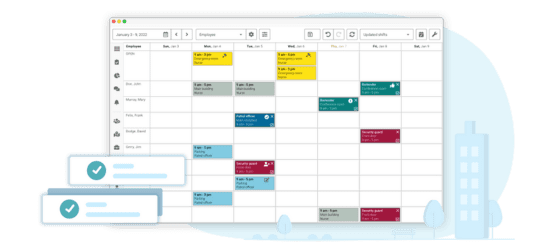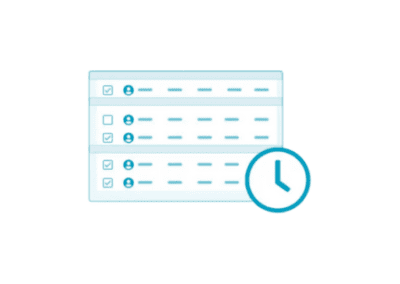Every business wants to do well. To do this, being efficient is key. This means doing your best with as little wasted time and money as possible. In this post, we’ll talk about how managing you can utilise workforce management strategies to improve operational efficiency!
What is Operational Efficiency?
Operational efficiency is the heartbeat of a successful business. It’s about streamlining business processes, maximizing resources, and reducing waste, all while maintaining high-quality output. Efficient businesses deliver services or products quickly and at a lower cost, giving them a competitive advantage.

Of course, they have also ensured that their workforce management supports their overall efficiency. Employee scheduling at McDonald’s follows industry best practices, with considerations for supply chain capabilities, market conditions, and regulations. They plan schedules to use resources efficiently and satisfy fast-food customers. It’s no wonder they’re one of the worlds most successful businesses!
What is Workforce Management?
Workforce management is like conducting an orchestra. It’s the strategic coordination of your team to optimize their productivity and satisfaction. This involves scheduling, forecasting, budgeting, and performance management. The ultimate aim is to have the right people, with the right skills, in the right place, at the right time.
Factors like labor forecasting, product demand, seasonal trends, employee scheduling, time and attendance, and more form the basis of effective workforce management. When you consider just how much your team affects your efficiency, you can see how important it is to get your workforce management right.
The Impact of Poor Operational Efficiency
Inefficiency is costly. It leads to resource wastage, lower productivity, employee dissatisfaction, and even damage to your brand. In a world where customer expectations are sky-high, businesses cannot afford the setbacks of poor efficiency.
Financial Impact

- Increased Costs: Inefficient operations often lead to higher costs across various aspects of the business. This can include wasted resources, such as raw materials, energy, or time, as well as increased labor costs due to overtime or inefficient utilization of personnel. Additionally, inefficiencies may result in higher maintenance expenses for equipment or facilities that are not operating optimally.
- Reduced Revenue: Inefficient operations can directly impact revenue generation. Delays, poor quality, and ineffective sales and marketing can reduce sales and revenue. Moreover, dissatisfied customers may take their business elsewhere, resulting in lost opportunities for repeat business and referrals.
- Lower Profit Margins: The combination of increased costs and reduced revenue often translates into lower profit margins for the business. Inefficiencies eat into your profits by eroding the difference between revenue and expenses. This can undermine the financial health of the business and limit its ability to invest in growth initiatives or weather economic downturns.
- Missed Opportunities: Inefficient operations can prevent businesses from capitalizing on opportunities for growth and expansion. For example, slow response times to market changes, inadequate inventory management, or ineffective resource allocation may cause the business to miss out on lucrative opportunities or lose market share to more agile competitors.
Other factors such as damage to your reputation and potential non-compliance can also affect your bottom line.
Impact on Productivity

- Reduced Output: One of the most direct consequences of inefficient operations is a decrease in overall output. When processes are not streamlined or optimized, it takes longer to complete tasks or produce goods, leading to lower productivity levels. This can result in missed deadlines, delayed deliveries, and decreased customer satisfaction.
- Wasted Time and Resources: Inefficient operations often involve unnecessary or redundant steps that consume valuable time and resources. Employees spend excessive time searching for information, waiting for approvals, or manually handling tasks that could be automated. This not only reduces productivity but also increases costs and frustrates employees.
- Bottlenecks and Delays: Inefficient operations can create bottlenecks and delays in workflow, slowing down the pace of work and impeding progress. This can occur when tasks are not properly sequenced, resources are unevenly distributed, or there is a lack of coordination between departments or teams. Queues or piles of work getting stuck results in decreased productivity.
- Employee Frustration and Disengagement: Dealing with inefficient processes can be demoralizing for employees, leading to frustration, disengagement, and decreased morale. When employees feel that their efforts are being wasted or perceive little control over their work environment, their motivation and commitment to achieving high levels of productivity decrease.
- Quality Issues: Inefficient operations can compromise the quality of products or services, leading to defects, errors, or customer complaints. When processes are not properly managed or monitored, mistakes are more likely to occur, resulting in rework, scrap, or customer returns. This not only decreases productivity but also increases costs and damages the reputation of the business.
- Lack of Innovation: Inefficient operations can stifle innovation and creativity within the organization. When employees are bogged down by inefficient processes or overwhelmed by daily tasks, they have less time and energy to dedicate to brainstorming new ideas or improving existing processes. This can hinder the organization’s ability to adapt to changing market conditions or seize opportunities for growth and improvement.
Maximize Operational Efficiency through Effective Workforce Management
Leverage Technology and Automation
Technology, when used correctly, can be a game-changer. Automation of routine tasks frees up time for strategic thinking and innovation, thereby enhancing overall operational efficiency. We’ll take a look at how Celayix workforce management software can help with most of the areas we discuss below.
Employee Scheduling
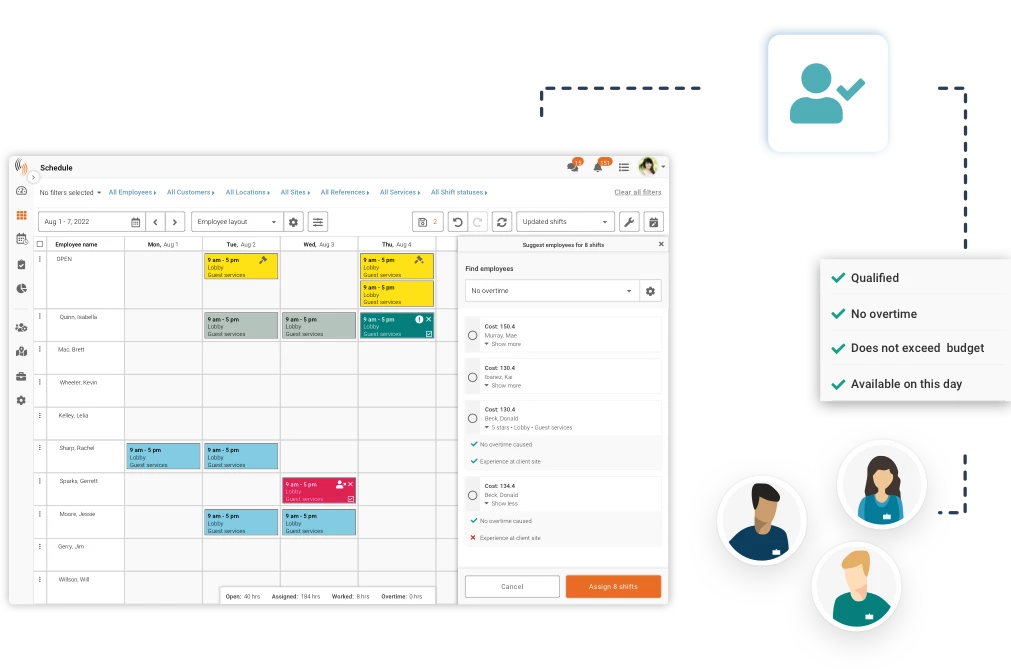
Celayix can help you automate and improve your employee scheduling process. Use our rules-based engine to ensure that the people with the right skills and qualifications are in the right place at the right time. Our software can also help you reduce the time you spend creating employee schedules by up to 95%!
Our ai and machine learning features also mean that our software learns more as you schedule. Using historical data, schedule quality will continue to improve over time!
Overtime Management
Overtime should be an exception, not a norm. Effective management involves identifying why overtime is happening and addressing the root causes. This helps in maintaining a healthy work-life balance for employees and reduces extra costs for the business.
Celayix uses the rules based engine we mentioned above to help you completely eliminate unnecessary overtime. The system alerts schedulers any time they schedule an employee into overtime. The software can suggest a list of other, good-fit employees in real time!
Data-Driven Decision Making
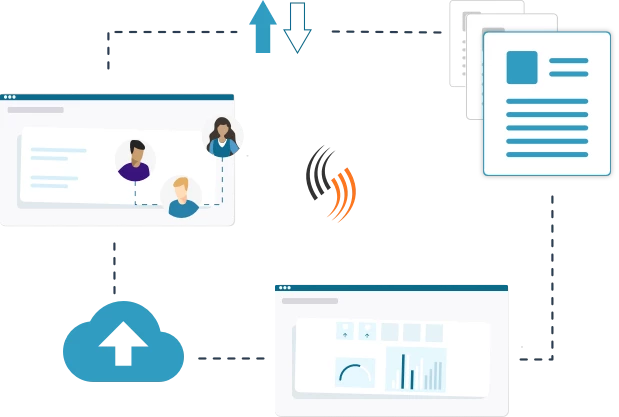
Celayix can also help here! View historical data based on your employee schedules, missed shifts and absenteeism. This data will help you improve your workforce management over time. Our software can also help with labor forecasting which will optimise your schedules more to reduce the likelihood of under/overstaffing.
Empower Employees with Self-Service Options
When employees have control over their schedules and access to necessary information, they feel more empowered and engaged. This reduces administrative tasks for managers and improves overall workforce satisfaction.
Guess what? Celayix is a big help here too! Our employee scheduling software gives you a variety of tools to help with employee self-service.
We offer self-scheduling which offers shifts to good-fit employees on a first come first served bases. We also offer shift bidding, which allows employees to express interest in open shifts, but gives the final say to the employer. Finally, with our software your employees can input their availability meaning you can schedule them for shifts you know they are available for. All of these tools help you to provide healthy work-life balance.
Comprehensive Training and Development
Continuous training ensures your team is up-to-date with the latest skills and knowledge. This leads to more efficient problem-solving, better customer service, and a more agile workforce. Offer your employees opportunities to learn, cross train, and develop their skill set which will help you out in the long run.
While we don’t offer direct help in this area, we do offer qualification management. If your employees require certain certificates or qualifications to do their job, you can input and track those with our software. We will notify you of any expiring information, and that data can also be used to ensure only those who are qualified can be assigned to certain shifts.
Effective Communication Channels
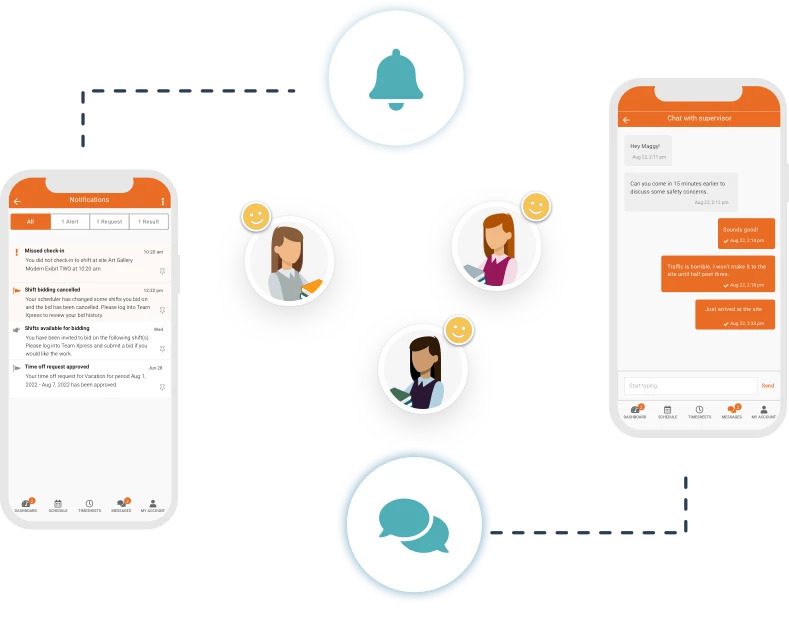
Celayix offers you tools to directly communicate with your staff through our employee app. Whether that’s with a simple message, or to communicate schedule changes. You don’t have to worry about a WhatsApp group chat or missed messages any more.
Continuous Improvement and Adaptation
The business world is constantly evolving, and so should your workforce management strategies. Regular reviews and adaptations of your processes ensure that your business stays ahead of the curve.
Focus on Employee Well-being
Employee well-being directly impacts productivity. A happy, healthy team is more engaged, takes fewer sick days, and is more productive. Investing in employee well-being is not just good ethics; it’s smart business.
Build a Culture of Accountability
When everyone in the team feels accountable for their work, efficiency soars. This culture of accountability leads to higher quality outputs, better teamwork, and a stronger commitment to the company’s goals.
Of course, in order to be successful here, you need to be able to measure operational efficiency. There are several methods and key performance indicators you can use to do this:
- Resource Utilization: Assess how effectively the business is utilizing its resources, including labor, materials, equipment, and facilities.
- Cycle Time and Throughput: Evaluate the time it takes to complete a process or deliver a product or service from start to finish.
- Quality Performance: Measure the quality of products or services delivered to customers and identify areas for improvement.
- Cost Efficiency: Evaluate the cost-effectiveness of operations and identify opportunities to reduce expenses while maintaining quality.
- Inventory Management: Assess the efficiency of inventory management practices and minimize excess inventory levels.
- Customer Service and Delivery Performance: Evaluate the timeliness and effectiveness of customer service and delivery processes.
- Employee Productivity and Satisfaction: Measure employee productivity and satisfaction levels to gauge the effectiveness of workforce management practices.
Achieving operational efficiency through effective workforce management is a dynamic and ongoing process. By continuously adapting and refining your strategies, you not only enhance productivity and reduce costs but also create a more satisfying work environment for your employees. Remember, in the race for business excellence, efficiency is not just about doing things right; it’s about doing the right things right. If you want to see exactly how Celayix workforce management can help you improve your operational efficiency, arrange a free live demo here!


